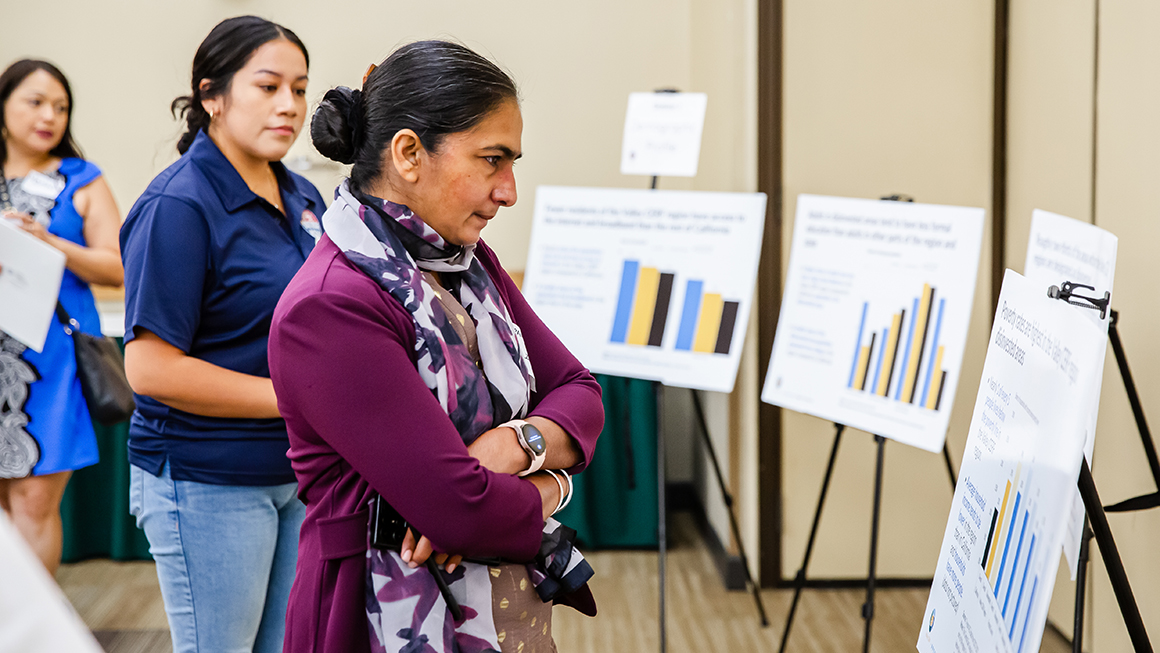
The recent influx of investments in fighting climate change—including the Inflation Reduction Act and other federal, state, and private-sector resources—is bringing the nation closer to a future with a healthier environment, new green jobs, and greater local and regional economic opportunity. However, effectively implementing these investments so they make the greatest difference in communities themselves requires reconciling larger goals with local priorities and ensuring that those most affected have a say in investments and updates.
California’s Sierra San Joaquin region—two-thirds of which the state has designated as “disinvested”—offers new insights into how community visions for climate-forward regional economic development may differ from these top-down narratives. This is especially important because of the region’s intensive agricultural activity, uncertainty over industries’ futures amid climate change, and the region’s potential to lead new clean energy development.
The Sierra San Joaquin Jobs Coalition (S2J2) received a grant under the California Regional Investment Initiative to develop a roadmap for regional economic development that would create high-quality jobs and build resilience to both the effects of climate change and other disruptions, like the COVID-19 pandemic. As part of their planning process, 10 nonprofit organizations supported by the S2J2 coalition engaged 4,378 community members across four counties through surveys, focus groups, and interviews. Our Urban Institute team provided training and technical assistance on community-engaged data collection methods to help inform the planning process. The coalition focused particularly on the experiences of farmworkers, migrant workers, young people, parents, residents of rural and unincorporated communities, and specific racial and ethnic groups, including Cambodian, Chinese, Hispanic/Latino, Hmong, Indigenous, Lao, Mixteco, and Punjabi communities—all communities with a significant local presence but whose experiences are often invisible in large datasets.
Together, their priorities offer a distinct vision of what a climate-forward economy in the region could look like. The way S2J2 engaged community and prioritized their insights offer lessons for other regions striving to build climate-forward economies.
Community members want a clean environment where they live and work
Farmworkers underscored that the region’s intensive agricultural practices significantly contribute to pollution and soil degradation and harm public health. Their insights amplified the baseline assessment findings, shedding light on specific challenges, such as the dust generated by the large volume of fruit orchards in Tulare County, which contributes to poor air quality. According to one 45-year-old farmworker, “Air pollution is so much that I could barely breathe sometimes…. I see less trees and green spaces around my zip code.”
Good jobs give workers both the financial and nonfinancial resources to secure stability, health, and upward mobility for themselves and their families
Respondents’ vision of a good job centered on three key elements—comprehensive benefits and health care, retirement contributions, and living wages—all building toward a broader need for work-life balance and not having to live paycheck to paycheck. Respondents also indicated a need for industries to develop in ways that not only create new good jobs but also improve the quality of current employment and benefit human and environmental health. “We want support to receive work benefits, for better treatment for us farm workers because they demand a lot from us and with little pay. They pressure us as if we were contractors but they pay us the minimum per hour,” said a Mixteco respondent in Fresno County.
Climate-forward industry benefits shouldn’t come at the expense of workers’ job security
For workers in industries poised for technological shifts (such as agriculture and food service), many respondents voiced concerns of job replacement, instability, and inability to financially “keep up” with new technologies. New technology and artificial intelligence arose as the prevailing perceived threat to job security and employment opportunities in the agricultural industry. Some agricultural workers also expressed fears that new technologies will include increased toxic chemicals, hurting workers’ health and the environment. Though these technological advancements in agriculture could improve workplace efficiency and workers’ physical safety.
Communicate how climate investments are addressing the root cause of disparities in their communities, not exacerbating them
Respondents expressed concern for safety—even though it wasn’t one of the topics the engagement set out to explore—in addition to lack of connectivity to public transportation routes and the inability to access workforce development and training opportunities because of limited language barriers. This reflects the broader need to deliver long-standing community and economic development benefits to disinvested communities as part of local climate strategies.
Plan with, not for
Often, top-down economic development plans obscure nuance in disinvested areas and apply broad-strokes solutions across diverse regions. Ensuring solutions are targeted and tailored toward residents’ real (rather than perceived) wants and needs can help build a region where all residents can benefit from economic development.
Let’s build a future where everyone, everywhere has the opportunity and power to thrive
Urban is more determined than ever to partner with changemakers to unlock opportunities that give people across the country a fair shot at reaching their fullest potential. Invest in Urban to power this type of work.